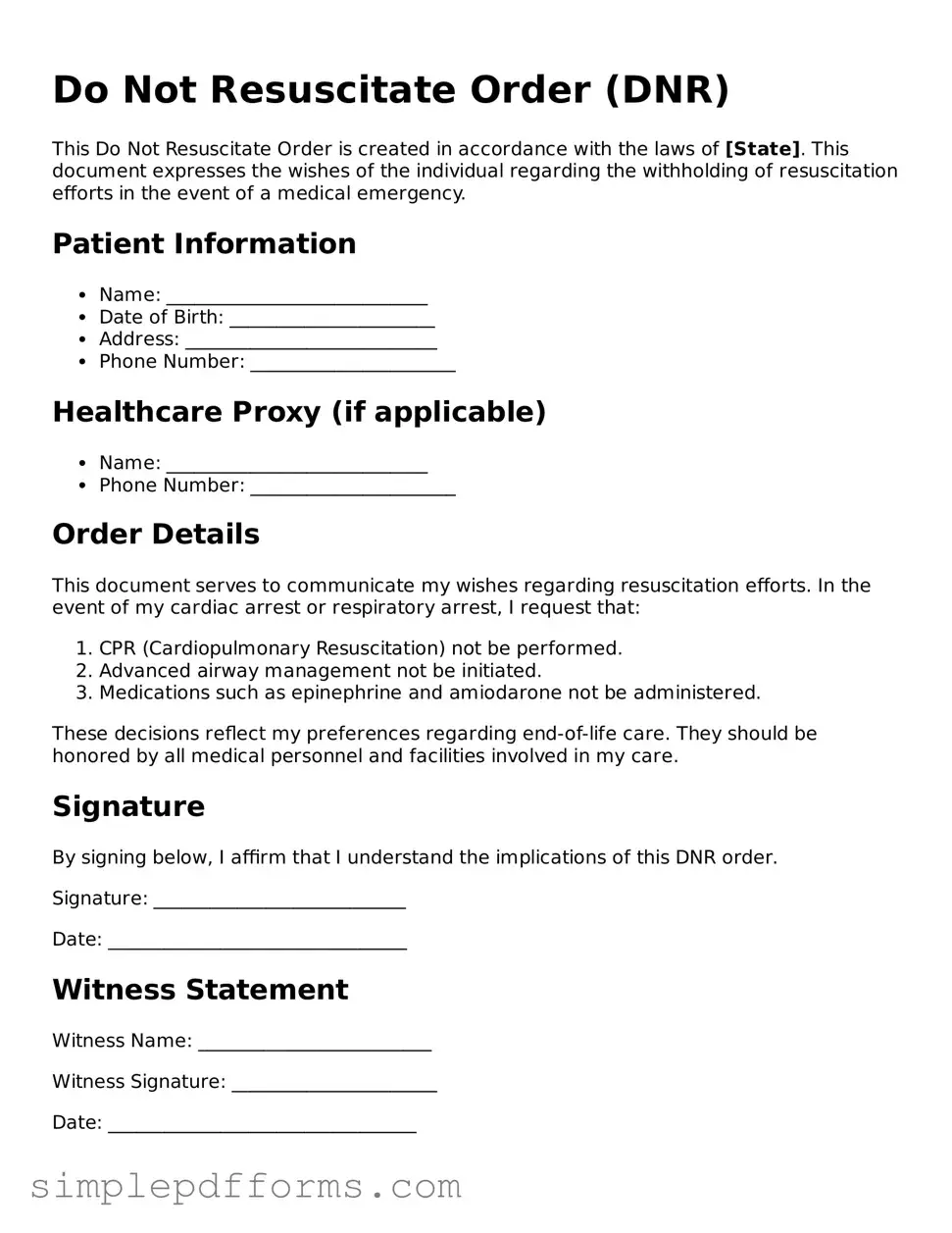Do Not Resuscitate Order (DNR)
This Do Not Resuscitate Order is created in accordance with the laws of [State]. This document expresses the wishes of the individual regarding the withholding of resuscitation efforts in the event of a medical emergency.
Patient Information
- Name: ____________________________
- Date of Birth: ______________________
- Address: ___________________________
- Phone Number: ______________________
Healthcare Proxy (if applicable)
- Name: ____________________________
- Phone Number: ______________________
Order Details
This document serves to communicate my wishes regarding resuscitation efforts. In the event of my cardiac arrest or respiratory arrest, I request that:
- CPR (Cardiopulmonary Resuscitation) not be performed.
- Advanced airway management not be initiated.
- Medications such as epinephrine and amiodarone not be administered.
These decisions reflect my preferences regarding end-of-life care. They should be honored by all medical personnel and facilities involved in my care.
Signature
By signing below, I affirm that I understand the implications of this DNR order.
Signature: ___________________________
Date: ________________________________
Witness Statement
Witness Name: _________________________
Witness Signature: ______________________
Date: _________________________________
